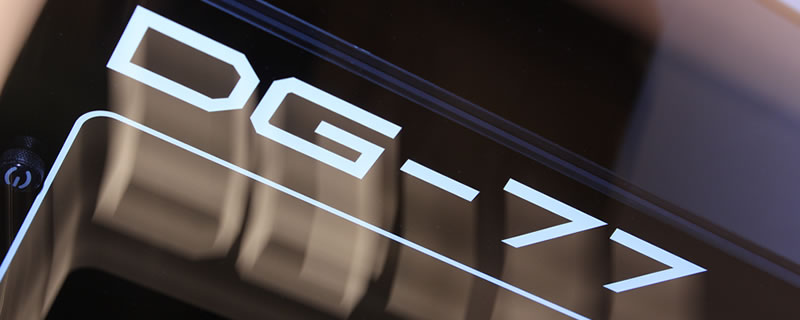EVGA DG-77 Review
Conclusion
The first thing you notice when unboxing the EVGA DG-77 is that it weighs a tonne. This you quickly discover is on account of it having all but the top and floor panels made from tempered glass (yes, even the rear panel is glass). It’s fair to say we’re big fans of big windows here at OC3D towers, so to have a case where you can peer in from virtually any angle should set our hearts racing, and to some degree it does. Why only to some degree? Well, we’re not too sure we like the way the EVGA have chosen to bring the panel shut lines together. Granted, they need to have gaps at the front to allow air in, but on other places we’d maybe have liked to see a more flush finish used.
Undo the various thumb bolts to release the panels and you get access to the interior, which is massively roomy, with a decent CPU cut out and ample cable management. It’s interesting that in a case with such high internal viability, EVGA chose not to opt for the more concealing rubber grommeted management holes, instead opting for a large off set gap running down the edge of where the motherboard stops. The front of the case is kept free from HDD racks and other assorted clutter, allowing for very large 360 and 280mm rads to be placed in push pull configuration. As you might imagine, there’s a false floor in the DG-77, but this only extends for the rear two thirds of the case and has a great many cut outs in it, so many in fact that it’s kinda missing the point in being able to act as a hiding place for unwanted cables and a mask for the PSU. Round the back, there are stealth mounts for two 2.5″ drives as well as two 3.5″ drives (these can also be used for 2.5″ drives). There’s decent cable management back here, and being as the rear side panel is also glass, you’re going to want to make sure it’s all neat and tidy.
The EVGA does have a few treats instore for us though. For starters you get a bracket, and a rise cable that allows you to mount your GPU vertically should you so desire, and you also get a selection of “DG-77” stickers in various colours to affix to the exterior of the glass, should you decide you don’t like the white on it comes with. Talking of stickers, you also get a pack of white self adhesive button stickers that can be used in place of the black ones that cover the numerous thumb bolts. The DG-77 also offfers the “K Boost” facility, which is basically a button which puts compatible hardware into “turbo” mode at the touch of a button. We’re not convinced seasoned clockers are going to use this, but it may appeal to those less skilled, or less willing to much about in the Bios.
So the EVGA DG-77 is a well made glass paneled case with decent storage, room for a massive rad in the front, as well as big GPUs and PSUs, and it comes with a great selection of accessories, so what’s not to like? Well the price for one. The thing is, quite a few other cases offer what EVGA do, or very nearly, and do so for considerably less money. Take for example the Define R6 we looked at recently, it’s a very similar case, but offers better water cooling, arguably better aesthetics, and it does so for a good £30 less.
The DG-77 isn’t a bad case, for from it. If you like the aesthetics, and we’re not 100% sure we do, and you have use for the K Boost and other functions, and Have the £160 that’s being asked for it, then you won’t be disappointed. Our advice though would be to have a look at what else that £160 gets you before you make your decision.




